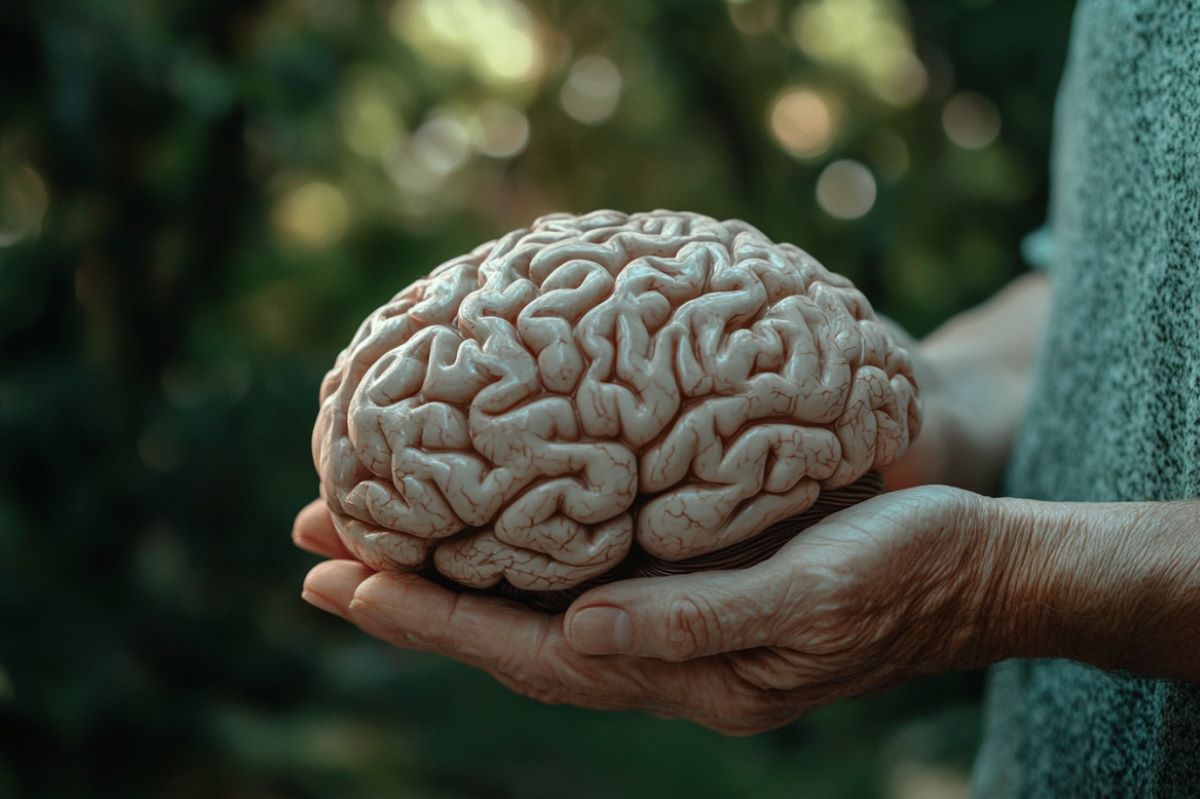This is in mice so your competent? doctor will need to contact non-existent stroke leadership to get human testing done. But that won't occur will it?
Do you prefer your doctor and hospital incompetence NOT KNOWING? OR NOT DOING?
Blocking a Brain Pathway Reverses Memory Loss in Alzheimer’s
Summary: Blocking the kynurenine pathway, a regulator of brain metabolism, can restore cognitive function in lab mice with Alzheimer’s disease. The pathway is overactivated in Alzheimer’s, disrupting glucose metabolism and starving neurons of energy.
By inhibiting this pathway, researchers improved memory and brain plasticity in mice, offering hope for new treatments in humans. IDO1 inhibitors, currently in cancer trials, could be repurposed for Alzheimer’s treatment.
Key Facts:
- Blocking the kynurenine pathway in mice with Alzheimer’s restored brain metabolism and improved memory.
- The kynurenine pathway is overactivated in Alzheimer’s, disrupting glucose metabolism in the brain.
- Drugs targeting this pathway, initially developed for cancer, show promise for Alzheimer’s treatment.
Source: Stanford
Among the many ways neuroscientists think Alzheimer’s disease may strip away brain function is by disrupting the glucose metabolism needed to fuel the healthy brain. In essence, declining metabolism robs the brain of energy, impairing thinking and memory.
Against that backdrop, a team of neuroscientists at the Knight Initiative for Brain Resilience at Stanford’s Wu Tsai Neurosciences Institute have zeroed in on a critical regulator of brain metabolism known as the kynurenine pathway.

They hypothesize that the kynurenine pathway is overactivated as a result of amyloid plaque and tau proteins that accumulate in the brains of patients with Alzheimer’s disease.
Now, with support from research and training grants from the Knight Initiative, they have shown that by blocking the kynurenine pathway in lab mice with Alzheimer’s Disease, they can improve, or even restore, cognitive function by reinstating healthy brain metabolism.
“We were surprised that these metabolic improvements were so effective at not just preserving healthy synapses, but in actually rescuing behavior. The mice performed better in cognitive and memory tests when we gave them drugs that block the kynurenine pathway,” said senior author, Katrin Andreasson, a neurologist at the Stanford School of Medicine and member of the Wu Tsai Neurosciences Institute.
The study, which included collaborations with researchers at the Salk Institute for Biological Studies, Penn State University, and others, appeared August 22, 2024 in the journal Science.
Hungry neurons
In the brain, kynurenine regulates production of the energy molecule lactate, which nourishes the brain’s neurons and helps maintain healthy synapses. Andreasson and her fellow researchers specifically looked at the enzyme indoleamine-2,3-dioxygenase 1 — or IDO1, for short — which generates kynurenine.
Their hypothesis was that increases in IDO1 and kynurenine triggered by accumulation of amyloid and tau proteins would disrupt healthy brain metabolism and lead to cognitive decline.
“The kynurenine pathway is over activated in astrocytes, a critical cell type that metabolically supports neurons. When this happens, astrocytes cannot produce enough lactate as an energy source for neurons, and this disrupts healthy brain metabolism and harms synapses” Andreasson said.
Blocking production of kynurenine by blocking IDO1 restores the ability of astrocytes to nourish neurons with lactate.
Best of all for Andreasson, and for Alzheimer’s patients, IDO1 is well known in oncology and there are already drugs in clinical trials to suppress IDO1 activity and production of kynurenine. That meant Andreasson could circumvent the time-intensive work of identifying new drugs and to begin testing in lab mice almost immediately.
In those tests, in which mice with Alzheimer’s Disease must navigate an obstacle course before and after drug intervention, Andreasson and team found that the drugs improved hippocampal glucose metabolism, corrected deficient astrocytic performance, and improved the mice’s spatial memory.
Promise kept
“We also can’t overlook the fact that we saw this improvement in brain plasticity in mice with both amyloid and tau mice models. These are completely different pathologies, and the drugs appear to work for both,” Andreasson noted. “That was really exciting to us.”
Better yet, this intersection between neuroscience, oncology, and pharmacology could help speed drugs to market if proved effective in ongoing human clinical trials for cancer.
“We’re hopeful that IDO1 inhibitors developed for cancer could be repurposed for treatment of AD,” Andreasson stressed.
The next step is to test IDO1 inhibitors in human Alzheimer’s patients to see if they show similar improvements in cognition and memory. Prior clinical tests in cancer patients tested the effectiveness of IDO1 inhibitors on cancer but did not anticipate or measure improvements in cognition and memory. Andreasson is hoping to investigate IDO1 inhibitors in human trials for Alzheimer’s disease in the near future.
About this Alzheimer’s disease and memory research news
Author: Nicholas Weiler
Source: Stanford
Contact: Nicholas Weiler – Stanford
Image: The image is credited to Neuroscience News
Original Research: Closed access.
“Restoring hippocampal glucose metabolism rescues cognition across Alzheimer's disease pathologies” by Katrin Andreasson et al. Science
No comments:
Post a Comment